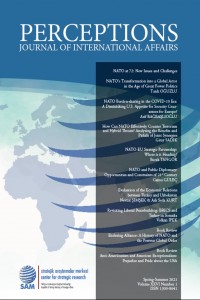How Can NATO Effectively Counter Terrorism and Hybrid Threats? Analyzing the Benefits and Pitfalls of Joint Synergies
Abstract
When it comes to hybrid threats, there are a number of gaps to be addressed to keep NATO strategically relevant for the Allies’ security. As many experts have observed, despite the potential for terrorist violence as a part of hybrid warfare, counter-terrorism as a response or preventive measure has an unexpectedly low profile in NATO’s policy on hybrid threats. The more NATO addresses these critical issues for Allies’ security through intra-alliance cooperation, the more strategically relevant the Alliance will be for its members. Hence, Alliance cohesion is a key starting point, but perhaps only the first step. The next steps are likely to be built together by working on venues for strategic cooperation and hybrid capacity-building. The security atmosphere of Europe and its neighborhood is becoming increasingly hybrid, and therefore requires the Allies to act accordingly. To what extent NATO can deliver under these circumstances will be the litmus test for the Alliance’s credibility and strategic relevance in the years to come. This article aims to explore how NATO can expand its strategic cooperation and develop effective countermeasures against terrorism and hybrid threats, while paving the way for hybrid capacity-building starting with NATO allies and potentially growing with regional partners.
References
- References are indicated in the article References are indicated in the article References are indicated in the article
Details
| Primary Language | English |
|---|---|
| Subjects | Political Science |
| Journal Section | Articles |
| Authors | |
| Publication Date | August 2, 2021 |
| Published in Issue | Year 2021 Volume: 26 Issue: 1 |


